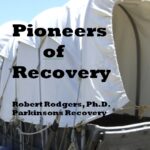Background: Repetitive transcranial magnetic stimulation (rTMS) is an effective noninvasive neuromodulation technique for Parkinson’s disease (PD). However, the efficacy of rTMS varies widely between individuals. This study aimed to investigate the factors related to the response to rTMS in PD patients.
Methods: We retrospectively analyzed the response of 70 idiopathic PD patients who underwent rTMS for 14 consecutive days targeting the supplementary motor area (SMA) in either an open-label trail (n = 31) or a randomized, double-blind, placebo-controlled trial (RCT) (n = 39). The motor symptoms of PD patients were assessed by the United Parkinson’s Disease Rating Scale Part III (UPDRSIII). Based on previous studies, the UPDRSIII were divided into six symptom clusters: axial dysfunction, resting tremor, rigidity, bradykinesia affecting right and left extremities, and postural tremor. Subsequently, the efficacy of rTMS to different motor symptom clusters and clinical predictors were analyzed in these two trails.
Results: After 14 days of treatment, only the total UPDRSIII scores and rigidity scores improved in both the open-label trial and the RCT. The results of multiple linear regression analysis indicated that baseline rigidity scores (? = 0.37, p = 0.047) and RMT (? = 0.30, P = 0.02) positively predicted the improvement of UPDRSIII. The baseline rigidity score (? = 0.55, P < 0.0001) was identified as an independent factor to predict the improvement of rigidity.
Conclusion: This study demonstrated significant improvements in total UPDRSIII scores and rigidity after 14-day Transcranial Magnetic Stimulation (TMS) treatment, with baseline rigidity scores and RMT identified as predictors of treatment response, underscoring the need for individualized therapy.
Robert Rodgers PhD
Founder 2004
Parkinsons Recovery


